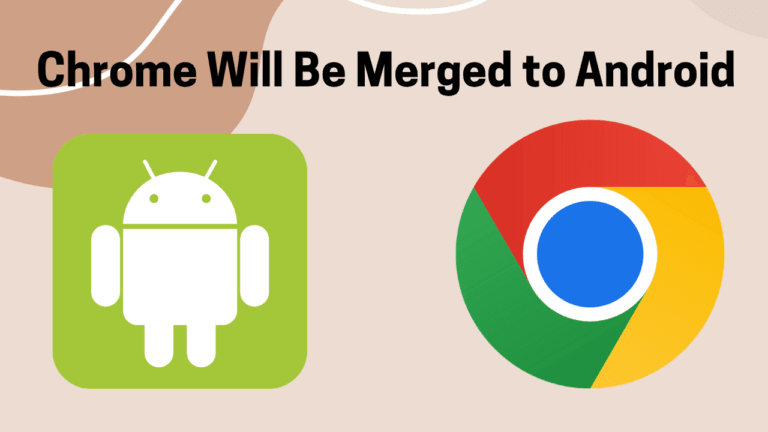
Table of Contents
Google has finally confirmed what many tech insiders have suspected for years – ChromeOS Android merger to create One Platform, Many Devices. This strategic shift aims to streamline development, deepen AI integration, and create a seamless experience across phones, tablets, and laptops.
In this article, let’s break down what this merger means for users, developers, and the entire Android-ChromeOS ecosystem.
Why is Google Merging ChromeOS and Android?
During an interview with TechRadar, Sameer Samat, Google’s Head of Android Ecosystem, explained the vision behind this big decision.
“We’re building the ChromeOS experience on top of Android’s underlying technology to unlock new levels of performance, iterate faster, and make your laptop and phone work better together,” said Samat on X (formerly Twitter).
This clearly shows Google’s desire to create “One Platform, Many Devices.”
For years, ChromeOS and Android have coexisted with overlaps but different development cycles. ChromeOS catered to Chromebooks with its lightweight browser-based approach, while Android powered billions of smartphones and tablets. Now, unifying them means:
Faster updates across devices
Better compatibility between phones and laptops
Deeper integration of AI and Google services
Reduced duplication of work within Google’s teams
What Will Change Technically?
In June 2024, Google announced that ChromeOS will soon be built on Android’s Linux kernel and core framework. This means that under the hood, ChromeOS will share the same foundational technology as Android.
Benefits of this technical change:
Streamlined Development
Google’s engineers can work on one platform base rather than two separate ones, accelerating feature rollouts and security updates.Improved AI Integration
Android is becoming deeply AI-native with Gemini and on-device processing. Building ChromeOS on Android allows these AI features to seamlessly extend to Chromebooks.Better App Compatibility
Android apps on Chromebooks will run with even better performance and fewer bugs because the underlying framework is now common.
Will ChromeOS Look Different?
According to Samat, the user interface and overall experience of ChromeOS will remain unchanged – at least for now.
This is a wise decision, especially considering the growing adoption of Chromebooks in education and enterprise sectors. Radical UI changes could disrupt workflows, training, and compatibility, creating unnecessary resistance among institutional users.
Instead, Google’s plan is to:
Modernize the backend technology stack
Maintain a familiar front-end for users
Ensure reliability and security remain top priorities
Android 16 and the Future of Laptops
The merger aligns perfectly with Android 16’s upcoming features, which include:
Desktop-style app windowing for tablets
Improved external display support
These features indicate that Android is preparing to behave more like a desktop operating system. Merging ChromeOS into Android will allow:



Why Now?
Industry analysts believe that Google is taking this step due to several strategic pressures:
Competition from Apple’s Mac + iPad Ecosystem
Apple’s M-series chips and seamless integration between iPadOS and macOS have set a high bar for cross-device experiences.Microsoft’s AI PC Push
With Windows introducing AI features deeply embedded into the OS, Google needs a unified platform to deploy Gemini AI broadly.Streamlining Resources
Maintaining two OS platforms with overlapping functions is costly and inefficient in the long run.
Impact on Developers
For developers, this move could be game-changing:
Easier cross-device app development
Unified SDKs and APIs for Android and ChromeOS
Better performance optimization tools
Ultimately, developers will be able to create apps that run smoothly on phones, foldables, tablets, and laptops without rewriting code for each environment.
What About Users?
Short-term impact:
- No noticeable change in interface or user experience
- Chromebooks will continue functioning as they do now
- Android apps may run with improved stability and performance
Long-term impact:
- Access to AI-powered features currently limited to Android phones
- Chromebooks behaving more like Android tablets with keyboard and desktop UI extensions
- Better integration with Android phones for calls, notifications, and shared workflows
Potential Risks & Challenges
While the merger sounds promising, it comes with its set of challenges:
Maintaining enterprise and education compatibility during technical migration
Ensuring that ChromeOS’s lightweight, fast-boot nature is not compromised
Managing user perception to avoid confusion between Android and ChromeOS branding
However, Google seems to have learned from past missteps (like the initial Android tablet fragmentation) and is taking a cautious, backend-focused approach first before rolling out front-end changes.
What Does the Future Hold?
This merger is not just about Android and ChromeOS. It signals Google’s broader vision of a connected ecosystem, where:
- Phones, tablets, Chromebooks, smart displays, and wearables share the same underlying platform
- AI features flow seamlessly across devices
- Developers build once for the entire ecosystem
In the coming years, we can expect:
Chromebooks to support more advanced Android apps with desktop interfaces
Android tablets to replace laptops for many everyday productivity tasks
Google to integrate Gemini AI deeply into all form factors
Final Thoughts
Google’s move to merge ChromeOS with Android marks a defining moment in the company’s platform strategy. While the immediate effects will be invisible to most users, the long-term benefits could transform how we use Google devices for work, learning, and creativity.
As Android 16 rolls out and the merger progresses, one thing is clear:
The future is about one platform powering every device – seamlessly, intelligently, and efficiently.
Stay tuned to TechMitra.in for the latest insights on Android, ChromeOS, and Google’s AI advancements.
